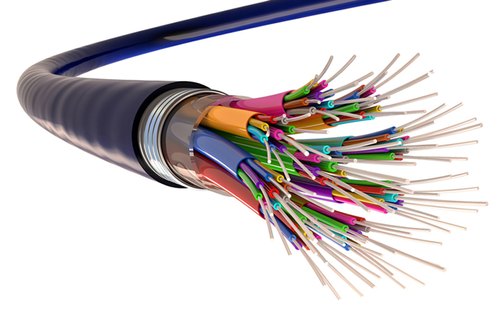An optical fiber (or fiber in British English) is a versatile, clear fiber made by expanding glass (silica) or plastic into a broadness to some degree thicker than a human hair. Optical fibers are as a rule used as a method for sending light between two terminations of a fiber and find all over use in fiber-optic correspondences, where they travel over longer distances and higher bandwidth (data move rates) than electrical connections.
license transmission. Strands are used instead of metal wires since signals travel with them with less hardship; likewise, fibers are safe to electromagnetic impedance, an issue that impacts metal wires. Strands are also used for lighting up and imaging, and are commonly encased by gatherings so they can be used as by virtue of fiberscopes, or to light pictures from bound spaces. Extraordinarily arranged strands are furthermore used for by far most various applications, some of them being fiber optic sensors and fiber lasers. For additional such articles, follow techkorr.
Optical fibers regularly include a middle enveloped by a clear cladding material that has a low record of refraction. The episode light from the total internal reflection is kept in the middle in view of which the fiber goes probably as a waveguide. Strands that help various inducing ways or get over modes are called multi-mode fibers, while those that help a lone mode are called single-mode strands (SMF). Multi-mode fiber customarily has a greater focus broadness and is used for short distance correspondence joins and for applications where high power ought to be sent. Single-mode fiber is used for correspondence associates longer than 1,000 meters (3,300 ft).
History
The heading of light by refraction, the standard that makes fiber optics possible, was first shown by Daniel Colladon and Jacques Babinet in Paris during the 1840s. John Tindall recollected an appearance of it for his public discussions in London 12 years sometime later.
In the late nineteenth and mid 20th many years, light was directed through bowed glass bars to edify body openings. Near inside illumination during useful applications, for instance, dentistry appeared during the twentieth hundred years. Picture transmission through tubes was shown independently during the 1920s by radio experimenter Clarence Hansel and TV pioneer John Logie Baird. During the 1930s, Heinrich Lamm exhibited the way that one could send pictures through a store of optical strands without wearing them and use it for inside clinical evaluations, but his work was by and large ignored.
In 1953, Dutch specialist Bram van Heel [NL] beginning showed picture transmission through loads of optical fibers with a direct cladding. Around similar time, Harold Hopkins and Narinder Singh Kapani at Imperial College in London won concerning making an image transmission load with more than 10,000 strands, and later refined picture transmission through a 75 cm long gathering, containing two or three thousand fibers. . The key valuable fiber optic semi-versatile gastroscope was made in 1956 by Basil Hirschowitz, c. Wilbur Peters and University of Michigan researcher Lawrence E. Authorized by Curtis. During the time spent cultivating the gastroscope, Curtis made the essential glass-clad fiber; Previous optical strands relied upon air or irrational oils and waxes as low-record cladding materials. You ought to likewise know about hughesnet contract.
Trades
Optical fiber is used as a vehicle for media correspondences and PC coordinating in light of the fact that it is versatile and can be bundled as a connection. This is particularly useful for critical distance correspondences, as infrared light multiplies through fiber with significantly less debilitating than power in power joins. This considers longer distances with very few repeaters. 10 or 40 Gbit/s is normal in conveyed structures.
Utilizing recurrence division multiplexing (WDM), each fiber can convey various free channels, each using a substitute recurrence of light. The net data rate per fiber (data rate without bytes vertical) is the per-channel data rate decreased by the FEC up copied by the amount of channels (customarily up to 80 in business thick WDM systems beginning around 2008).
Optical fibers regularly include a middle enveloped by a clear cladding material that has a low record of refraction. The episode light from the total internal reflection is kept in the middle in view of which the fiber goes probably as a waveguide. Strands that help various inducing ways or get over modes are called multi-mode fibers, while those that help a lone mode are called single-mode strands (SMF). Multi-mode fiber customarily has a greater focus broadness and is used for short distance correspondence joins and for applications where high power ought to be sent. Single-mode fiber is used for correspondence associates longer than 1,000 meters (3,300 ft).
For short distance applications, for instance, networks in a position of business (see fiber to the working environment), fiber-optic cabling can save space in connect pipes. This is in light of the fact that a lone fiber can pass on impressively more data than power joins, for instance, standard Category 5 connections, which routinely run at 100 Mbit/s or 1 Gbit/s speeds.
Fiber is moreover habitually used for short distance relationship between equipment. For example, most top quality TVs give a modernized sound optical affiliation. This allows the spouting of sound over the light, using the S/PDIF show over an optical TOSLINK affiliation.

